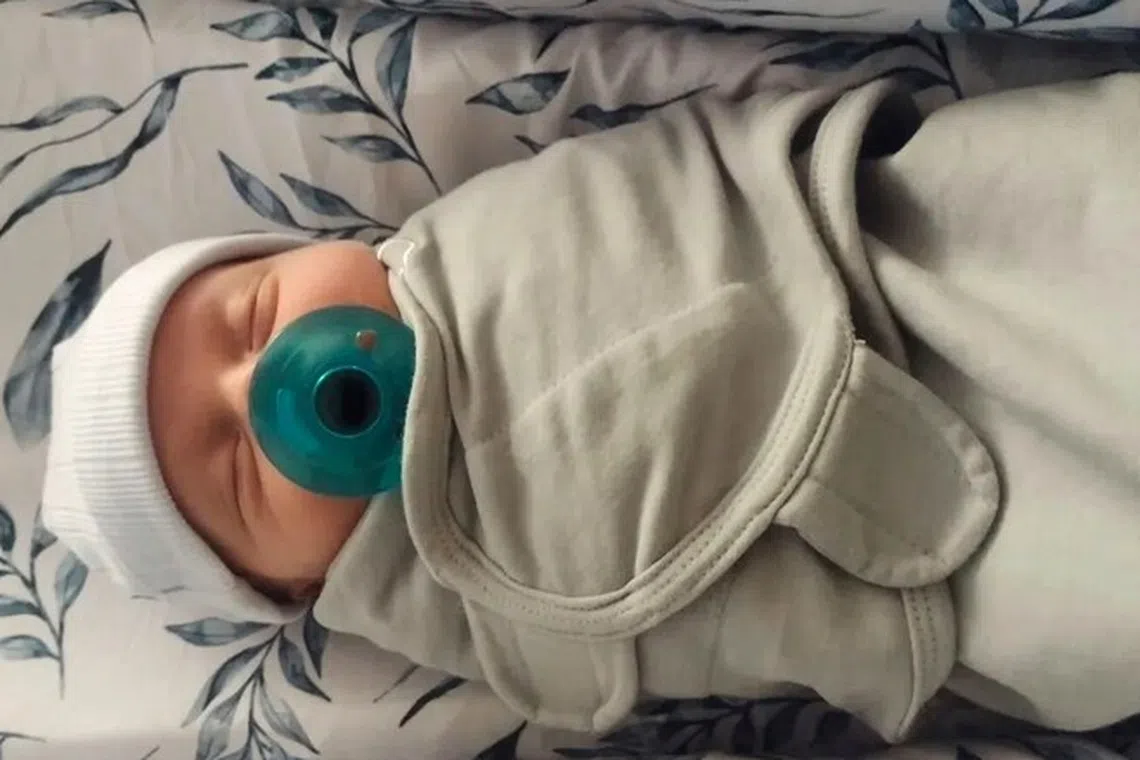US couple welcomes baby boy from embryo frozen for nearly 31 years
Sign up now: Get ST's newsletters delivered to your inbox

Thaddeus Daniel Pierce began as an embryo in 1994, the same year that Forrest Gump hit theatres and the first PlayStation.
PHOTO: REJOICE FERTILITY CLINIC/FACEBOOK
Follow topic:
Thaddeus Daniel Pierce took his first breaths at a hospital in Knoxville, Tennessee, on July 26. He weighed 3kg, had a modest tuft of hair, and technically was already more than 30 years old.
His life began as an embryo in 1994, the same year that Forrest Gump hit theatres and the first PlayStation appeared on store shelves.
Thaddeus had spent the intervening 11,148 days in cold storage, a tiny time capsule in liquid nitrogen, before being adopted by Ms Lindsey Pierce, 35, and Mr Tim Pierce, 34, from Ohio.
The Pierces’ son is believed to be the result of the longest-frozen embryo ever brought to term.
Ms Pierce said they “weren’t trying for a record”.
“We just wanted a baby,” she said. “He is so chill. We are in awe that we have this precious baby.”
The embryo belonged to Ms Linda Archerd, now 62, who in the 90s turned to in-vitro fertilisation (IVF) after fighting infertility for years.
Back then, the ability to freeze and thaw embryos was still something of a frontier.
Ms Archerd’s IVF treatments resulted in four embryos, and she had intended to use them all. The first one led to a daughter, but a divorce later left the remaining three suspended not only in nitrogen but also in limbo.
For years, Ms Archerd paid the storage fees, first dutifully, then guiltily.
“I used to think of them as three little hopes,” she said.
Eventually, she founded Snowflakes, a Christian-oriented embryo-adoption programme that lets donors choose adoptive families and maintain some degree of openness.
It offered a compromise between letting the embryos expire and the more abstract anonymity of donation.
Embryo adoption remains rare. Just 2 per cent of US births involve IVF, and an even smaller fraction involve embryos that began as someone else’s.
Meanwhile, an estimated 1.5 million embryos sit in freezers across the United States, awaiting either a second chance or an administrative decision.
What do to with ‘leftovers’?
Dr John David Gordon, the Pierces’ fertility specialist, said the problem “is that we’re very good at making embryos, but we’re not very good at deciding what to do with the leftovers”.
Dr Gordon’s clinic, Rejoice Fertility, is known for accepting even the most geriatric embryos, sometimes shipped across the US in ageing containers.
Of the three embryos that Ms Archerd donated to the Pierces, one did not survive the thaw. Two were transferred to Ms Pierce, and one was implanted.
That single embryo – older than some of the nurses in the delivery room – became a living child.
The achievement comes against a shifting legal backdrop.
Earlier in 2024, Alabama’s Supreme Court ruled
Legislators have since offered temporary liability protections, but the question of how to treat embryos – ethically, legally, emotionally – remains unsettled.
Ms Archerd says she feels relief, mixed with a kind of melancholy. She has received photos of the boy from the Pierces and hopes one day to meet him.
“I would love to see him,” she said. “Just to know that he’s real, and that my little hopes are out in the world.”


